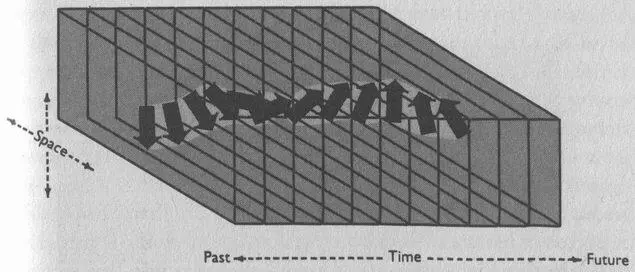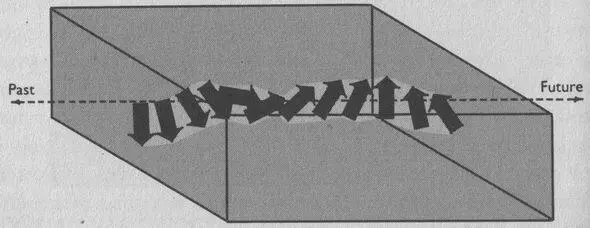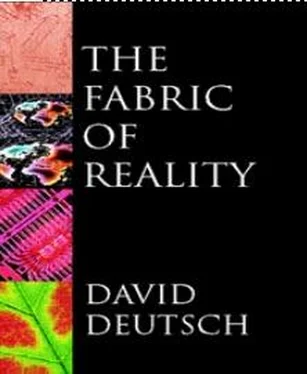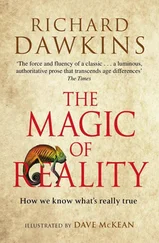David Deutch - The Fabric of Reality
Здесь есть возможность читать онлайн «David Deutch - The Fabric of Reality» весь текст электронной книги совершенно бесплатно (целиком полную версию без сокращений). В некоторых случаях можно слушать аудио, скачать через торрент в формате fb2 и присутствует краткое содержание. ISBN: , Жанр: Физика, Философия, на английском языке. Описание произведения, (предисловие) а так же отзывы посетителей доступны на портале библиотеки ЛибКат.
- Название:The Fabric of Reality
- Автор:
- Жанр:
- Год:неизвестен
- ISBN:0-7139-9061-9
- Рейтинг книги:4 / 5. Голосов: 2
-
Избранное:Добавить в избранное
- Отзывы:
-
Ваша оценка:
- 80
- 1
- 2
- 3
- 4
- 5
The Fabric of Reality: краткое содержание, описание и аннотация
Предлагаем к чтению аннотацию, описание, краткое содержание или предисловие (зависит от того, что написал сам автор книги «The Fabric of Reality»). Если вы не нашли необходимую информацию о книге — напишите в комментариях, мы постараемся отыскать её.
The Fabric of Reality — читать онлайн бесплатно полную книгу (весь текст) целиком
Ниже представлен текст книги, разбитый по страницам. Система сохранения места последней прочитанной страницы, позволяет с удобством читать онлайн бесплатно книгу «The Fabric of Reality», без необходимости каждый раз заново искать на чём Вы остановились. Поставьте закладку, и сможете в любой момент перейти на страницу, на которой закончили чтение.
Интервал:
Закладка:
So why did Newton think it necessary to say that time ‘flows equably’? There is nothing wrong with ‘equably’: one can interpret that as meaning that measurements of time are the same for observers at different positions and in different states of motion. That is a substantive assertion (which, since Einstein, we know to be inaccurate). But it could easily have been stated as I have just stated it, without saying that time flows. I think that Newton was deliberately using the familiar language of time without intending its literal meaning, just as he might have spoken informally of the Sun ‘rising’. He needed to convey to the reader embarking on this revolutionary work that there was nothing new or sophisticated in the Newtonian concept of time. The Principia assigns to many words, such as ‘force’ and ‘mass’, precise technical meanings which are somewhat different from their common-sense ones. But the numbers referred to as ‘times’ are simply the times of common sense, which we find on clocks and calendars, and the concept of time in the Principia is the common-sense one.
Only, it does not flow. In Newtonian physics, time and motion appear much as in Figure 11.3. One minor difference is that I have been drawing successive moments separated from one another, but in all pre-quantum physics that is an approximation because time is a continuum. We must imagine infinitely many, infinitely thin snapshots interpolating continuously between the ones I have drawn. If each snapshot represents everything throughout the whole of space that physically exists at a particular moment, then we can think of the snapshots as being glued together at their faces to form a single, unchangeable block containing everything that happens in space and time (Figure 11.4) — that is, the whole of physical reality. An inevitable shortcoming of this sort of diagram is that the snapshots of space at each moment are shown as being two-dimensional, whereas in reality they are three-dimensional. Each one of them is space at a particular moment. Thus we are treating time as a fourth dimension, analogous to the three dimensions of space in classical geometry. Space and time, considered together like this as a four-dimensional entity, are called spacetime.

FIGURE 11.4 Spacetime, considered as successive moments.
In Newtonian physics this four-dimensional geometrical interpretation of time was optional, but under Einstein’s theory of relativity it became an indispensable part of the theory. That is because, according to relativity, observers moving at different velocities do not agree about which events are simultaneous. That is, they do not agree about which events should appear on the same snapshot. So they each perceive spacetime as being sliced up in a different way into ‘moments’. Nevertheless, if they each stacked their snapshots in the manner of Figure 11.4, the spacetimes they constructed would be identical. Therefore, according to relativity, the ‘moments’ shown in Figure 11.4 are not objective features of spacetime: they are only one observer’s way of perceiving simultaneity. Another observer would draw the ‘now’ slices at a different angle. So the objective reality behind Figure 11.4, namely the spacetime and its physical contents, could be shown as in Figure 11.5.
Spacetime is sometimes referred to as the ‘block universe’, because within it the whole of physical reality — past, present and future — is laid out once and for all, frozen in a single four-dimensional block. Relative to spacetime, nothing ever moves. What we call ‘moments’ are certain slices through spacetime, and when the contents of such slices are different from one another, we call it change or motion through space.

FIGURE 11.5 Spacetime view of a moving object.
As I have said, we think of the flow of time in connection with causes and effects. We think of causes as preceding their effects; we imagine the moving present arriving at causes before it arrives at their effects, and we imagine the effects flowing forwards with the present moment. Philosophically, the most important cause-and-effect processes are our conscious decisions and the consequent actions. The common-sense view is that we have free will: that we are sometimes in a position to affect future events (such as the motion of our own bodies) in any one of several possible ways, and to choose which shall occur; whereas, in contrast, we are never in a position to affect the past at all. (I shall discuss free will in Chapter 13.) The past is fixed; the future is open. To many philosophers, the flow of time is the process in which the open future becomes, moment by moment, the fixed past. Others say that the alternative events at each moment in the future are possibilities, and the flow of time is the process by which, moment by moment, one of these possibilities becomes actual (so that, according to those people, the future does not exist at all until the flow of time hits it and turns it into the past). But if the future really is open (and it is!), then that can have nothing to do with the flow of time, for there is no flow of time. In spacetime physics (which is, effectively, all pre-quantum physics, starting with Newton) the future is not open. It is there, with definite, fixed contents, just like the past and present. If a particular moment in spacetime were ‘open’ (in any sense) it would necessarily remain open when it became the present and the past, for moments cannot change.
Subjectively, the future of a given observer may be said to be ‘open from that observer’s point of view’ because one cannot measure or observe one’s own future. But openness in that subjective sense does not allow choices. If you have a ticket for last week’s lottery, but have not yet found out whether you have won, the outcome is still open from your point of view, even though objectively it is fixed. But, subjectively or objectively, you cannot change it. No causes which have not already affected it can do so any longer. The common-sense theory of free will says that last week, while you still had a choice whether to buy a ticket or not, the future was still objectively open, and you really could have chosen any of two or more options. But that is incompatible with spacetime. So according to spacetime physics, the openness of the future is an illusion, and therefore causation and free will can be no more than illusions as well. We need, and cling to, the belief that the future can be affected by present events, and especially by our choices; but perhaps that is just our way of coping with the fact that we do not know the future. In reality, we make no choices. Even as we think we are considering a choice, its outcome is already there, on the appropriate slice of spacetime, unchangeable like everything else in spacetime, and impervious to our deliberations. It seems that those deliberations themselves are unchangeable and already in existence at their allotted moments before we ever know of them.
To be an ‘effect’ of some cause means to be affected by that cause — to be changed by it. Thus when spacetime physics denies the reality of the flow of time, it logically cannot accommodate the common-sense notions of cause and effect either. For in the block universe nothing is changeable: one part of spacetime can no more change another than one part of a fixed three -dimensional object can change another.
It so happens that all fundamental theories in the era of spacetime physics had the property that given everything that happens before a given moment, the laws of physics determine what happens at all subsequent moments. The property of snapshots being determined by other snapshots is called determinism. In Newtonian physics, for instance, if at any moment one knows the positions and velocities of all the masses in an isolated system, such as the solar system, one can in principle calculate (predict) where those masses will be at all times thereafter. One can also in principle calculate (retrodict) where those masses were at all previous times.
Читать дальшеИнтервал:
Закладка:
Похожие книги на «The Fabric of Reality»
Представляем Вашему вниманию похожие книги на «The Fabric of Reality» списком для выбора. Мы отобрали схожую по названию и смыслу литературу в надежде предоставить читателям больше вариантов отыскать новые, интересные, ещё непрочитанные произведения.
Обсуждение, отзывы о книге «The Fabric of Reality» и просто собственные мнения читателей. Оставьте ваши комментарии, напишите, что Вы думаете о произведении, его смысле или главных героях. Укажите что конкретно понравилось, а что нет, и почему Вы так считаете.












